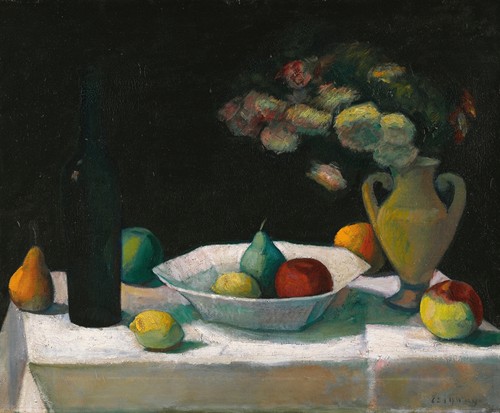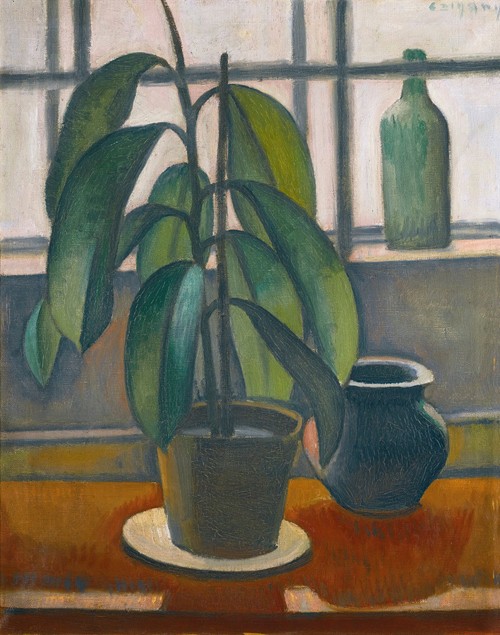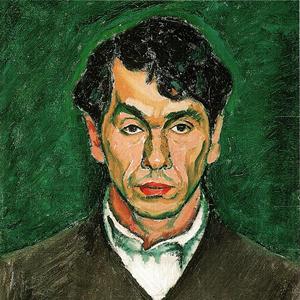




Dezső Czigány was a Hungarian painter who was born and died in Budapest. He was one of The Eight (1909–1918), who first exhibited under that name in Budapest in 1911 and were influential in introducing cubism, fauvism and expressionism into Hungarian art.
Many of them had studied in Munich and, even more importantly, Paris, from which they brought back leading techniques and artistic movements. They were part of the radical intellectual culture in Budapest in the early 20th century, associated with such poets as Endre Ady and composers as Béla Bartók. In 1937, Czigány killed his family and committed suicide in what was considered a psychotic breakdown.
Dezső Czigány was born to a Jewish-Hungarian family in Budapest in 1883. As a young man, he went to Munich to study art, and also to Paris. In 1901 and 1903, he studied at the Nagybánya artists' colony in Hungary, at what is now Baia Mare, Romania.
Czigány was interested in exploring more contemporary movements in art and became one of The Eight in Budapest. Their first exhibit, called New Pictures, was in 1909, and in 1911, they opened another called The Eight. Other members included Károly Kernstok, Béla Czóbel, Róbert Berény, Ödön Márffy, Deszső Orbán, Lajos Tihanyi and Bertalan Pór. The sculptors Márk Vedres and Vilmos Fémes Beck were also associated with them.
While they had just three exhibits as a group, the painters were influential as part of the radical intellectual life in the city, and participated in related events in literature and music; they were important through 1918. Among the writers and composers involved with The Eight was Endre Ady, and Czigány was one of at least four men who painted a portrait of this pivotal figure and friend in the early 20th century. The composer Béla Bartók was also associated with these artists.
By 1914, Czigány was one of four of the group accepted for an exhibit at the Vienna Künstlerhaus, together with Márffy, Orbán, and Kernstok. The works of Berény and Tihanyi, who had embraced expressionism, were rejected as too radical.
He painted many still lifes in numerous variations. They are considered to show his quality of restraint and withdrawal, as the scholar Irén Kisdéginé Kirimi describes them as "lacking any lyrical quality."
Unlike several members of the group who left in 1919 after the fall of the Hungarian Democratic Republic, Czigány stayed in Hungary for most of his career. In his later life, he also painted numerous self-portraits, always with a serious expression on his face.
Suffering from depression, in 1937 Czigány killed his family and committed suicide.


